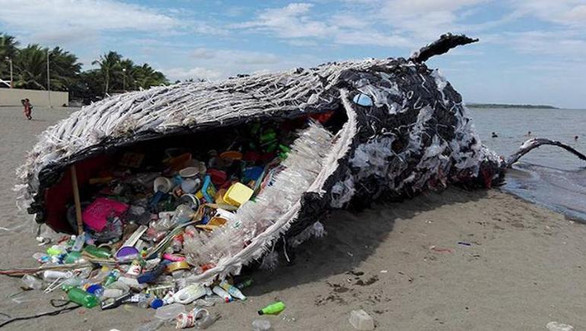We are part of the Environment...
- Kruthi Muthigi

- Aug 11, 2019
- 5 min read
Updated: Sep 6, 2019
In recent times, the main concern and issues that arise in the world, are related to the Environment.
Many initiatives are being taken in order to preserve each vital piece of the Environment so that the future is safe for us to exist on this planet.
Although many of us are taking the responsibility in doing our part, there are some of us who still tend to continue damaging, or violating the rules of nature.
Obviously, I cannot control that as one individual but we should remember that WE ARE PART OF THE ENVIRONMENT AS WELL because everything is connected somehow or the other to us.
As our surroundings deteriorate, we deteriorate simultaneously. How?
Well, let me state the list of top issues in the Environment and how they are linked to all of us as a whole.
1. WATER
Water pollution, scarcity, wastage, you name it!
As humans, we are driving ourselves towards drought or scarcity of water by wasting it, or over-using it. How?
We leave the taps running while brushing, or leave the showers running for too long while bathing.
We let water leak from taps, tankers, and pipes.
We take a full glass of water, and end up drinking less than the taken amount, and throw away the rest.
And much much more!
The recent Crisis in Chennai, India can explain the consequences that will follow for all of us if we do not start acting up to change the environment for the better
Click here to read about what happened.
By doing this, not only are we wasting water, but we ourselves are driving ourselves towards issues like drought, empty ground-water storage, scarcity etc. which one fine day will affect our lives fighting for even the smallest amount of water.
Due to oil spills, and abundance of plastic waste and toxic chemicals entering the waterways, we’re damaging the most valuable resource our planet has to offer by killing marine life, birds, and even humans! Not to mention the rise in disease-causing bacteria and insects.
Contamination of water can affect human health, while also killing marine life, which we end up consuming ourselves!
If you have read about the food-chain, then you will know how this will affect us ultimately.
2. Plastic & non-degradable materials
Usage of plastic in the form of bags, bottles, scrap, micro-beads from scrubs etc. do not degrade into soil. They get accumulated and prevent water to percolate into the ground water system, and eventually lead to insufficient water.
Dumping plastic into the ocean or forests instead of putting them in for recycling, makes animals consume them thinking that it is food, and it kills them, or we end up consuming the plastic or contaminated meat, and it affects us as various forms of diseases, disorders, or infections.
Recycling plastic or paper can be the solution to this problem. Instead of throwing plastic or paper away along with the rest of our trash, we can simply separate them into a different bag or bin, and give them for recycling. This way, plastic accumulation can be reduced to an extent.
Try to use less plastic items on a daily basis. Instead of plastic water bottles, switch to metal ones. Instead of using plastic toothbrushes and cutlery, we can switch to wooden. Instead of using plastic straws, bags and cups, we can use paper-made ones (Like McDonalds has initiated to do).
3. Deforestation
Plants, and trees play the most important role in the environment. They help us survive by providing us oxygen, while protecting us from floods, attracting rain, and even for consumption.
With deforestation occurring at an alarming rate, one fine day, there won't be any food, medicine, paper, shelter, or oxygen left to supply for all of us to survive.

Acid rains, which are caused by excess emissions of nitrogen-oxide and sulfur dioxide (Caused by emissions from factories, cars etc.) occur in the environment where there is very little or none of purification done by plants and trees. Such rains contaminate the soil, which destroys the quality and ability to house plants, and even kills them. Oceans become contaminated and species end up dying, which further damages the quality of surplus obtained from the Ocean. River water, and ground water become contaminated and even harmful for human consumption.

Trees and plants act as obstacles from heavy amounts of water, as they absorb them or hold it in. This helps prevent floods and save many people and crops from damage, or landslides.
Without trees, excess greenhouse gases get accumulated in the atmosphere which causes the ozone layer to deplete. That in-turn causes harmful UV Rays enter the atmosphere and affect many species, including humans.
Trees and plants are also homes to thousands of species on this planet. By eradication of their homes, we are destroying their species. Bees, for example, need trees for their hive. Along with birds, they help in the process of pollination by transferring seeds and pollen for plants and species to survive further through reproduction. Without trees, there are no birds, or bees. Without them, there is no chance of existing plants or trees to survive. Without plants or trees, we won't be able to survive. Do you get the connection now?
The solution? Limit commercialized projects that involve cutting down trees or forests for land. Start recycling paper and paper-based materials. Plant as many trees and plants as you can! It's not as hard as you think it is, because recently Ethiopia made headlines for the best, and biggest world record.
On July 29, 2019, the people of Ethiopia gathered across the country to plant 350 million sapling trees in just 12 hours.
If they can do it, so can we.
4. Pollution
There are mainly 7 key types of pollution – air, water, soil, noise, radioactive, light and thermal . All of which are affecting our environment. Factors such as deforestation and over-usage of non-degradable materials, affect the rate of pollution more than we can ever imagine.
5. High Carbon Footprint & Extreme Climate Change
According to the UN, eating lesser meat can actually save the planet from extreme climate change as certain diets have a lower CO2 footprint.
Click here to refer the article
What is a Carbon Footprint?
" A Carbon Footprint, is defined as the total emissions caused by an individual, event, organization, or product, expressed as carbon dioxide equivalent."
Lack of rainfall, or extreme rainfall, scorching summers, droughts, extreme humidity, storms, hurricanes, tornadoes, blizzards, tsunamis, floods, natural wildfires, and every calamity known to man-kind are happening in drastic measures today because of the environment being affected.
6. Slaughtering Animals for human consumption
Be it killing elephants for their tusks, Rhino's for their horns, Tigers, leopards, and polar bears for their skin or fur, Reptiles for leather, extreme slaughtering for food, and the list goes on.
Animal cruelty, and slaughtering is a huge problem in recent times. I probably do not need to explain much since viral videos on YouTube and Instagram show it all already.
Such extreme acts can lead to extinction of species and eventually affect the environment (like the bees and birds story I told you earlier)
I saw the most emotional animation video on YouTube recently that describes how animals are treated, which shows how cruel humans are turning out to be.
Click here to watch the video
All I want to say in order to conclude this article, is that we are completely responsible for every damage and consequence occurring in the world today. In fact, WE ARE A PART OF THE ENVIRONMENT TOO! If anything happens, the first to be affected is undoubtedly us. It is not too late to act upon this.
We can still save the environment by implementing these small changes in our lives. "One little action can cause a chain-reaction" and everyone will eventually contribute.
I began my contribution. Are you ready to do your part?
Comment below, or DM me on my Instagram handle to let me know what you're doing to save the environment.
PICTURE CREDITS: Google
Copyrights Reserved ©




































Comments